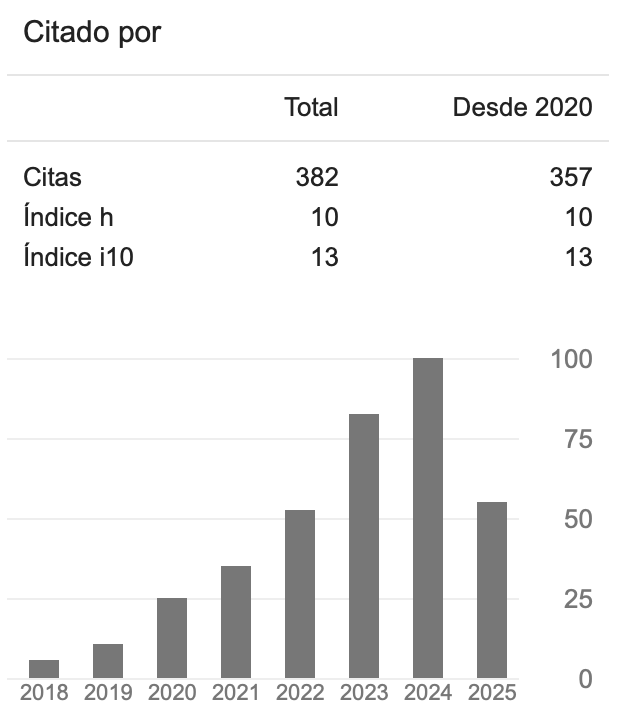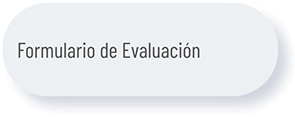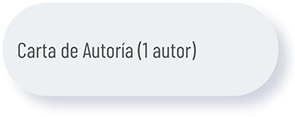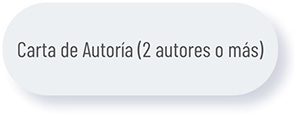Submissions
Instructions for Authors
Welcome to DAYA Journal: Diseño, Arquitectura y Arte, a biannual publication dedicated to the dissemination of high-quality academic and scientific research. We appreciate your interest in contributing to the advancement of knowledge in design, art, and architecture through DAYA.
Below you will find relevant information about the journal and its submission process:
Actors
Author: A faculty member affiliated with an educational or research institution, or an independent researcher, who has developed the article submitted for publication. The author holds full authorship and responsibility for the content.
Editorial Board: This group is composed of the Editor-in-Chief, Executive Editors, Editorial Board, and the Editorial and Technical Support Team. All are collaborators of the Universidad del Azuay who contribute to the editorial production process, including the Casa Editora, Proofreader, Layout Designer, Translator, and Open Journal System Technician. The Editorial Team of DAYA Journal consists of external Research Professors from the Universidad del Azuay, either Ecuadorian or international, who hold graduate-level academic degrees (Master’s or Doctorate), possess research and publication experience, and have completed the formal process of joining the Team. These members are experts in the fields of design, architecture, and art. They provide academic and scientific advice to the Journal, contribute to management and decision-making regarding content and article quality, assist in the selection of reviewers, supervise and evaluate submissions, review editorial policies, support strategic decisions and journal promotion, help formulate editorial strategies, strengthen the Journal’s presence within the scientific community, and foster connections with other academic institutions, researchers, and organizations in the field. The Board convenes twice per semester: once at the start of each issue’s call for papers and once after publication, to review and evaluate both forthcoming and published content. The Editorial Board as a whole ensures the biannual publication of the Journal, overseeing and directing the entire editorial process.
Peer Reviewers: Composed of university professors or researchers from the Universidad del Azuay or external institutions (Casa Editora), either Ecuadorian or international, who hold third- or fourth-level academic degrees and have completed the formal process of becoming collaborators. The identification and incorporation of peer reviewers are carried out through an ongoing search in scientific journals related to the fields covered by DAYA Journal, as well as among researchers participating in conferences, symposia, and academic meetings in the areas of design, architecture, and art. The Editorial Board contacts prospective reviewers via email, requesting the submission of their curriculum vitae. The team then verifies and evaluates each candidate’s academic background (related to design, architecture, and art) and scientific trajectory in order to issue a formal invitation letter to join as a peer reviewer. Collaborators are officially appointed after submitting a letter of acceptance, which outlines the reviewer’s commitments and responsibilities. Finally, the Editorial Board confirms their appointment through an Adhesion Letter. Each year, the Editorial Board reviews and updates the peer reviewer database, following the same selection criteria as in the initial process, and taking into account each reviewer’s contributions during their collaboration period.
Casa Editora: The entity responsible for the editing, printing, publication, and release of DAYA Journal, as well as for managing the assignment of the ISSN, the indexing of the Journal, and its accreditation before any relevant organization. The Casa Editora of DAYA Journal: Diseño, Arte y Arquitectura is the Universidad del Azuay.
Nature of the Articles
Types of Articles: Submissions for publication may include Research Articles, Review Articles, and Reflection Articles. In all cases, the primary focus must be on academic and scientific content, representing original research, scientific communication, or creative work. Articles must be original; previously published work or manuscripts under consideration elsewhere will not be accepted.
Thematic Areas: Contributions should address topics within the fields of design, art, and architecture. Examples include: interdisciplinary design, industrial design, product design, object design, graphic design, visual communication, textile design, fashion design, interior design, architecture, urban planning, landscape architecture, architectural design, art, theatrical arts, performing arts, and other related disciplines.
Authors: Articles may have up to four authors, who may be affiliated with a higher education institution (institutional affiliation) or be independent researchers. Submissions with more than four authors will be reviewed by the Editorial Board of DAYA Journal. Authors retain intellectual property rights to their work at all times. Authors grant the Publishing House of the Universidad del Azuay and the Facultad de Diseño, Arquitectura y Arte the rights to distribute, transmit, use, edit, and publish the article. The authorship of submissions to DAYA Journal is considered under the following terms:
- External Authors: Contributions in which the author(s) declare affiliation with a higher education institution (HEI) other than the Universidad del Azuay. Manuscripts in which the author(s), not affiliated with any HEI, declare themselves as “Independent Researchers.” Submissions from alumni or graduates of the Universidad del Azuay who identify as Independent Researchers are also included. Contributions by research teams in which more than 50% of the authors declare institutional affiliation other than the Universidad del Azuay are considered external.
- Internal Authors (Universidad del Azuay – Publishing Entity): Contributions in which the author(s) declare membership in the faculty of the Facultad de Diseño, Arquitectura y Arte at the Universidad del Azuay, as verified by the Editorial Board. Manuscripts from researchers and faculty members who, while not part of the Facultad de Diseño, Arquitectura y Arte, belong to the Universidad del Azuay faculty are also considered internal. Contributions from research teams where 50% or more of the authors declare institutional affiliation with the Universidad del Azuay (Publishing Entity) are included as internal.
Each author’s affiliation should be presented as follows: full name, institutional affiliation, country, contact email, and ORCID code.
Language: Contributions are published in Spanish, following its grammatical norms. The title, subtitle (if applicable), abstract, and keywords must also be submitted in English, in addition to Spanish.
Submission Deadlines: Articles considered for each issue of DAYA Journal must be submitted by the deadline established and communicated by the Publishing House at the close of each call for papers.
Submission Email Address: Contributions should be sent to the following email address designated by the Casa Editora: revistadaya@uazuay.edu.ec.
Copyright: Authors retain intellectual property rights to their work at all times. Authors grant the Publishing House of the Universidad del Azuay and the Facultad de Diseño, Arquitectura y Arte the right to distribute, transmit, use, edit, and publish the article. To ensure scientific rigor and transparency in information dissemination, DAYA Journal adheres to the responsibilities, rights, and duties established by the Committee on Publication Ethics (COPE – publicationethics.org). For further information, it is recommended to consult the DAYA Journal Code of Ethics under the “About” menu.
Statement of Responsibility: DAYA Journal: Diseño, Arte y Arquitectura is committed to maintaining the highest standards of academic integrity and ethics in the publication process. By completing and signing the Authorship, Responsibility, and Contribution Letter, authors agree to fulfill the following responsibilities:
- Originality and Plagiarism: Authors submitting articles to DAYA Journal must ensure that their work is original and does not contain portions of other authors’ work or previously published fragments by themselves that are not properly cited, thereby infringing copyright. Authors also confirm the accuracy of the data, ensuring that empirical research results have not been altered. In this regard, authors are responsible for guaranteeing the originality of their research and for providing accurate and complete information about the work conducted. Authors must ensure they have the necessary rights to publish their work and must provide proper attribution at all times. Authors are responsible for correctly citing all sources that support the content presented in the article.
- Authorship: Regarding manuscript authorship, authors must include all individuals who have made significant scientific and intellectual contributions in roles such as: Project Administration, Funding Acquisition, Formal Analysis, Conceptualization, Data Curation, Investigation, Methodology, Resources, Original Draft Writing, Review and Editing, Software, Supervision, Validation, and Visualization (as declared in the Authorship, Responsibility, and Contribution Letter). Additionally, the order of authorship should reflect each author’s level of responsibility and involvement.
- Duplicate Publication: Authors must not submit articles to DAYA Journal that duplicate results already published in another scientific journal. Likewise, simultaneous submission of the same contribution to multiple journals is considered ethically inappropriate and unacceptable.
- Conflict of Interest: Authors are responsible for disclosing any financial or personal conflicts of interest that could influence the results or interpretations of their research. For publication, all authors must explicitly declare that no conflicts of interest have influenced the results obtained or interpretations proposed.
- Errors in Published Articles: Authors agree to cooperate with editors in correcting or retracting any errors. If an author identifies a significant error or inaccuracy in their article, they must immediately inform the editors of DAYA Journal by revistadaya@uazuay.edu.ec, providing all necessary information to implement the required changes prior to publication.
Article Submission Phase
Articles must adhere to the following guidelines:
Writing Style: The manuscript must maintain a scientific and academic tone throughout.
Text Format and Presentation: Articles should be submitted in Word format. The font should be Times New Roman, size 12, or Arial, size 11, with 1.5 line spacing, left-justified text with indentation, and references formatted with a hanging indent (second-line indentation). The article length should range from a minimum of 3,500 words to a maximum of 8,500 words, excluding the abstract, keywords, and references.
Citation: DAYA Journal follows the APA citation style. Prior to submitting a manuscript, authors must ensure that all citations comply with the latest APA edition in Spanish. Whenever possible, avoid citing secondary sources; primary sources should be used. Direct quotations should be employed only when strictly necessary.
Article Structure: The article should include the following components: Title in Spanish, Title in English, Full name of each author, Institutional affiliation of each author or, if applicable, declaration as an “Independent Researcher”, Country of the author, Contact email, ORCID ID of each author, Abstract in Spanish, Abstract in English, Keywords in Spanish, Keywords in English, Introduction, Methodology, Results, Discussion, Conclusions (optional), Notes (optional), and References. The IMR&D structure (Introduction, Methodology, Results, Discussion) is recommended but not mandatory for review and reflection articles.
Title: The title should clearly describe the content of the article, avoiding excessive word length, redundancy, abbreviations, unfamiliar jargon, or an overuse of prepositions. Overly explanatory phrases such as “aspects of,” “comments on,” “research about,” “observations on,” “report on,” “results of a study on,” or “analysis of the results” should be avoided. If necessary, a subtitle may be included.
Author Names and Institutional Affiliation: The author’s name should include the first name and last name(s) only, omitting any academic titles or degrees. The institutional affiliation should be indicated, identifying the institution or organization where the author works. If multiple affiliations exist, the primary affiliation should be listed. Additionally, the author’s country must be specified—either the country of self-declared independent research status or the country of the declared institutional affiliation—along with contact email and ORCID ID.
Abstract: The abstract should be a maximum of 260 words and written in a single paragraph. It must indicate the type of article (research article, review article, or reflection article). The abstract should also include the main objectives, scope of the research, purpose, methods used (if applicable), results obtained, or principal discussions derived from the study. All abstracts must also be presented in English (abstract) in addition to Spanish.
Keywords: It is recommended that each article include 3 to 7 significant keywords or descriptors that summarize the central topics addressed, separated by commas. Keywords should not repeat terms used in the title. All keywords must be provided in Spanish and translated into English (keywords). Preference should be given to nouns or nominalized words. Non-specific words such as “analyze,” “describe,” “investigate,” or other similar terms, as well as unfamiliar or newly coined terms, should be avoided. Instead, authors should use terminology common to the professional field of the topic. Keywords should be based on terms that a reader would likely use when searching for an article in a database or search engine. It is important to remember that the title, abstract, and keywords play a crucial role in article retrieval within databases and in their visibility to readers interested in specific topics. For keyword selection, authors are advised to consult the UNESCO Thesaurus (http://skos.um.es/unescothes/?l=es.)
References: The bibliography should include only the references cited in the text. Under no circumstances should an author be mentioned who is not cited within the manuscript. References must be listed alphabetically by the authors’ last names, using hanging indentation (second-line indent), and formatted according to APA style. Pay special attention to referencing online sources in accordance with APA guidelines; simply providing the website link is not sufficient.
Notes: Only strictly necessary notes should be included at the end of the manuscript. They should be written in Times New Roman, size 10, without indentation.
Figures: Images or graphics may be included and should always be labeled as Figure, numbered consecutively according to their appearance in the manuscript. In addition to being embedded in the text, figures must be submitted as independent JPEG/JPG files with a minimum resolution of 300 dpi. Only figures that are strictly necessary to support the text should be used. Each figure must include a figure number, figure title, and figure note (Format: Figure # —bold—. Figure title —italic—. Note —italic—. Clarifying text, observation, or citation of the figure [Author’s last name, year of publication, page or paragraph where the figure appears]). All figure references must also appear in the general reference list at the end of the manuscript, ordered alphabetically by the author’s last name and formatted according to APA style.
Tables: Tables may be included to present relevant information complementary to the main text. They should be labeled as Table, numbered consecutively according to their appearance in the manuscript. In addition to being embedded in the text, tables must also be submitted as independent editable files (Word or Excel) to facilitate the editorial process. Tables should be used only when they improve comprehension or provide a clear synthesis of the information presented. Each table must include a table number, table title, and explanatory note (Format: Table # —bold—. Table title —italic—. Note —italic—. Clarifying text, observation, or citation of the table [Author’s last name, year, page or paragraph]). References for tables must be included in the general reference list at the end of the manuscript, alphabetically ordered by the author’s last name, and formatted according to current APA guidelines.
______________________________________________________________________________________________
If the article submitted meets the guidelines outlined above, it may be sent to revistadaya@uazuay.edu.ec to be considered for the upcoming call for papers. The submission must be accompanied by the following information: an abbreviated CV of the author(s), not exceeding 150 words; a Letter of Authorship, Responsibility, and Contribution from the author (1 author / 2 or more authors) (the letter template can be requested at revistadaya@uazuay.edu.ec); and any figures or tables included in the article as independent files with a resolution greater than 300 dpi, if applicable.
Once the article and all accompanying materials are received at the indicated email address, they undergo an initial review to ensure compliance with all stated guidelines. Subsequently, the article is checked using Turnitin software to detect matches and prevent citation errors or plagiarism. If the analysis reveals uncited copied content, the article is returned to the author for correction and resubmission for a new plagiarism check before continuing in the editorial process. Failure to make the necessary corrections within the established timeframe, or failure to pass the plagiarism check, will result in the article being excluded from further consideration. DAYA Journal allows a maximum of 5% similarity. Any situation regarding an article that is not addressed in this protocol will be reviewed on a case-by-case basis by the Editorial Board.
Double-Blind Peer Review Phase
Each Reviewer is assigned a maximum of four articles per semester. Manuscripts are sent for review via email, using the address provided by each reviewer upon joining as a collaborator. To ensure anonymity in the double-blind process, the identities of authors and reviewers are kept confidential through a coding system, with the Editorial Board responsible for managing this information to maintain full confidentiality for both parties at all times. Each article is evaluated by at least two reviewers. For an article to be accepted for publication, it must receive approval from at least two assigned reviewers according to any of the first three decision categories described below.
The final decision from each reviewer must be submitted within the timeframe established by the Editorial Board to the official email address: revistadaya@uazuay.edu.ec. The review period ranges from 20 to 45 calendar days, regardless of the number of assigned articles. Reviewers must submit their decisions using the Evaluation Form for Research, Review, and Reflection Articles, which must be fully completed, signed, and sent to the designated email address.
Possible Decisions:
Reviewers may issue one of the following decisions:
- Accept the article as is: The manuscript represents an outstanding contribution and requires no modifications.
- Accept the article with minor suggestions: The manuscript requires minor adjustments.
- Accept the article with major revisions: Significant modifications are required for acceptance.
- Reject: The manuscript does not meet the scientific criteria or requires extensive corrections.
Procedure Following the Reviewer’s Decision:
- First decision (acceptance without changes): The article will be published without modifications, except for formatting adjustments to comply with DAYA Journal style.
- Second decision (acceptance with minor changes): The article will be published after the author makes the suggested corrections and any necessary formatting adjustments.
- Third decision (acceptance with major revisions): The author must make substantial modifications according to the comments received. If the revisions are completed within the established schedule, the article will be re-evaluated by the Editorial Board and, if required, by the Reviewer, before publication. If not, it will be considered for the next issue.
- Fourth decision (rejection): The article will not be published if it receives two negative evaluations. If the article receives one negative and one positive evaluation, it will enter a tiebreak process, and the publication decision will be deferred to the next issue.
In the event of rejection due to two negative evaluations, authors are still welcome to submit new contributions for future editions of the Journal.
Finally, the Editorial Board sends the final decision to the authors within five business days after receiving the last evaluation from the assigned Reviewer. Notifications are sent by email, including the Evaluation Form for Research, Review, and Reflection Articles, while maintaining the anonymity of reviewers at all times.
If the article requires changes, recommendations, or suggestions, authors have five business days to make the corrections. If they do not, they must provide a justification in a letter addressed to the Editor within the same period. Once this process is completed, the submission proceeds to the Copy Editing Phase.
Copy Editing Phase
This phase involves reviewing the formatting of scientific and academic communication, as well as syntactic and orthographic aspects based on current linguistic standards, typographical errors, or inconsistencies. It is carried out by the Editorial and Technical Support Team, specifically the Proofreader, who has a 30-day period to complete the corrections for all articles.
The observations and suggested corrections made by the Proofreader and the Editorial Board must be clear and explicit to facilitate the authors’ revisions. If the corrections can be carried out by the Editorial and Technical Support Team to expedite the process, they are implemented and then sent to the author for review and approval. In such cases, authors issue a Letter of Approval for the corrections made.
Author Correction Phase
Documents with corrections and observations that could not be addressed by the Editorial and Technical Support Team are sent via email to the authors for review. The deadline for submitting the final corrected article is five business days from the date the revised document is sent. Authors must submit two files of the final corrected article: one in RTF format and another in Word format.
Compilation Phase
If the number of articles that have successfully passed all previous stages exceeds fifteen, the Editorial Board selects the articles to be published in the current issue based on the following criteria:
- The date of receipt of the final corrected articles.
- The origin of the article (external authors from outside the Universidad del Azuay versus internal authors from the Universidad del Azuay).
Articles that have successfully completed all previous stages but were not selected for the current issue may be published in the following issue, subject to the authors’ consent.
The compilation of articles is organized by section according to the type of contribution (Research Articles, Review Articles, and Reflection Articles). The publication order is determined by the Editorial Board, considering criteria such as thematic diversity, institutional affiliation, and country of origin, in order to ensure a balanced, coherent, and smoothly readable issue.
Layout Phase
The Editorial and Technical Support Team, through its Graphic Designer, is responsible for the layout. Articles are sent by the Editorial Board as a condensed single Word file, along with the original separate files of figures/tables submitted by the authors, the index of the publication, cover content, credits page, presentation page, and the order of all content.
The layout must adhere to the visual identity established by the Journal and the Casa Editora. The professional responsible for the layout has twenty days from the delivery of the material to present the fully designed issue. The layout process is supervised and approved by the Editorial Board.
Publication Phase
The final draft of the designed publication is sent to authors for a last review and then delivered to the Publishing House for evaluation and approval of the editorial product. Once authorized, the issue is published in DAYA Journal’s Open Journal System (OJS-digital format) by the Editorial and Technical Support Team, through its OJS Administrator. Upon publication, the Editor-in-Chief (if necessary) informs the databases in which the Journal is indexed to verify compliance with its publication schedule.
Promotion and Distribution Phase
The publication of each issue of DAYA Journal is announced to authors, Editorial Board members, reviewers of that issue, Universidad del Azuay authorities, and the university community in general via email, encouraging dissemination within the academic community of each stakeholder. Additionally, the Casa Editora maintains continuous promotion of the publications through the official channels of the Universidad del Azuay and provides authors with promotional posters of their publication to share on social media, promoting downloads, usage, and citation by the academic, scientific, and professional community.





